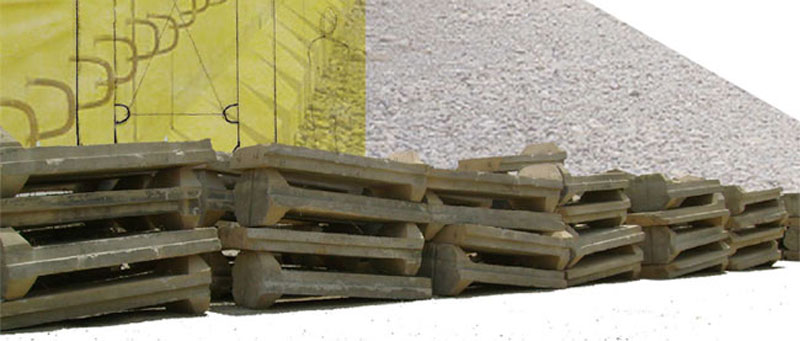
Abstract:
Fifty, sixty or even one hundred years from now, the people of Iraq may look around and see the landscape nearly the same as it has been for generations. They will also see the infrastructure of growth and progress, and they might not. One thing is for sure, they will still see an icon of our era: the “t-wall”. The context in which they see and experience these definitive structures will solidify our spot in the history books.
I propose the reuse of the modular wall system employed in Iraq, known as “t-walls”, for the building of infrastructure and public works. My proposal examines t-walls as the physical manifestation of a political situation, and therefore able to reflect political change by the nature of their reuse. To mitigate the enduring legacy of these ubiquitous concrete slabs, it is in our diplomatic interests to reuse these components for rebuilding. The t-walls provide a sturdy, portable, and a standardized concrete set of building blocks with which to work. They embody large amounts of energy and materials already used in their production; reuse also has the opportunity to minimize the environmental impacts of concrete production.
The recycling of this military artifact has a two-fold effect: by rebuilding with material symbolizing war and occupation, the negative legacy of that political era is mitigated, and it answers the question, “what will become of all this material and embodied energy when it is no longer needed for its current function?” Our physical legacy in Iraq is already written in concrete; through the adaptive salvage of t-walls we have the opportunity to transform it into a positive one.
Background:
Security wall systems can be found in urban places around the world with a recent history of conflict. The most notable might be the Soviet walls of Berlin, Germany. The Berlin Wall was a modular, concrete wall system employed in an urban setting. While the Berlin Wall’s expressed purpose was to divide people along a political line that has since ceased to exist, today the walls remain as a scar on the city, and a physical trace of the oppression associated with the Soviet regime. Today, the direct predecessor of American t-walls can be found used in Israel as part of the Israeli West Bank Barrier; a wall that will hold historical meaning for generations to come. These walls remain long after the political situations that create the need for them and act as oppressive reminders of conflict.
T-walls are a part of daily life in the urban centers of Iraq. In their most basic essence they reorder the urban fabric, partitioning neighborhoods, surrounding various kinds of compounds, edging routes, and, as many will argue, ultimately protecting the lives of many people. T-walls in Iraq were nonexistent before American involvement. Today there are hundreds of thousands of these walls used, and unused, all over the country The past decade shows great hardship and struggle for those living in these urban areas. Nothing represents the daily uncertainty of living in a war zone better than the massive concrete t-walls.